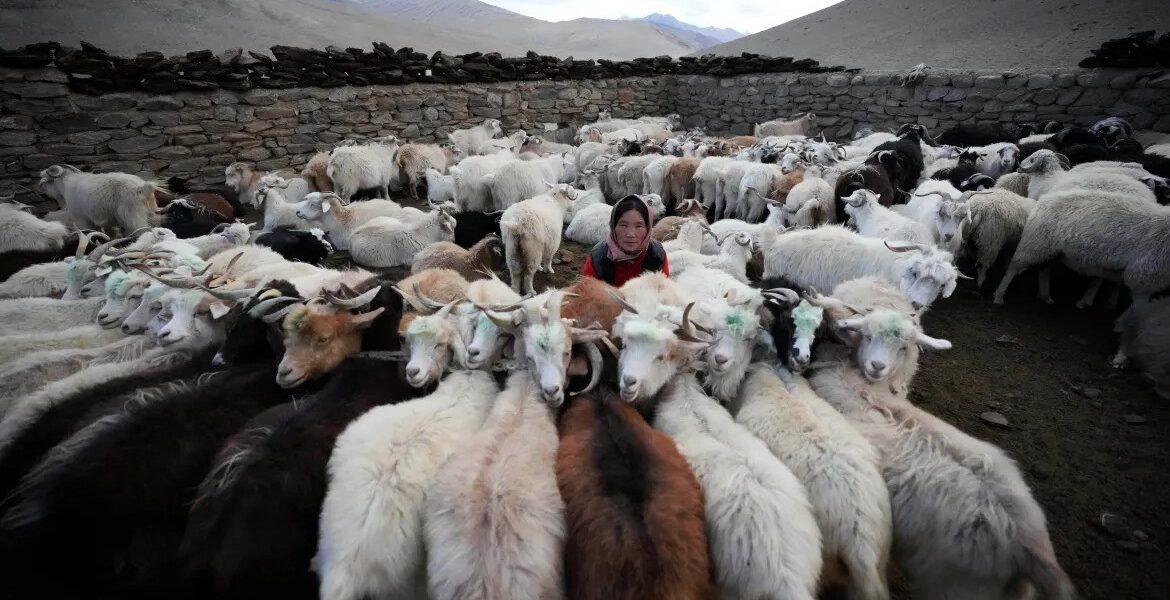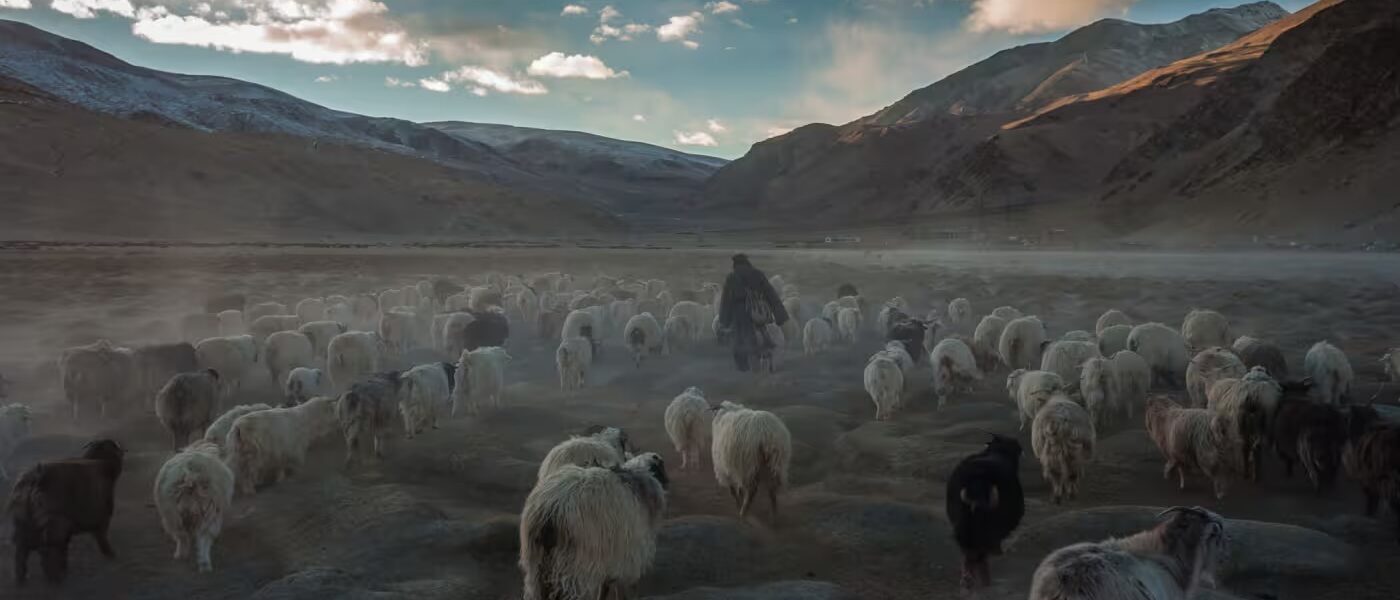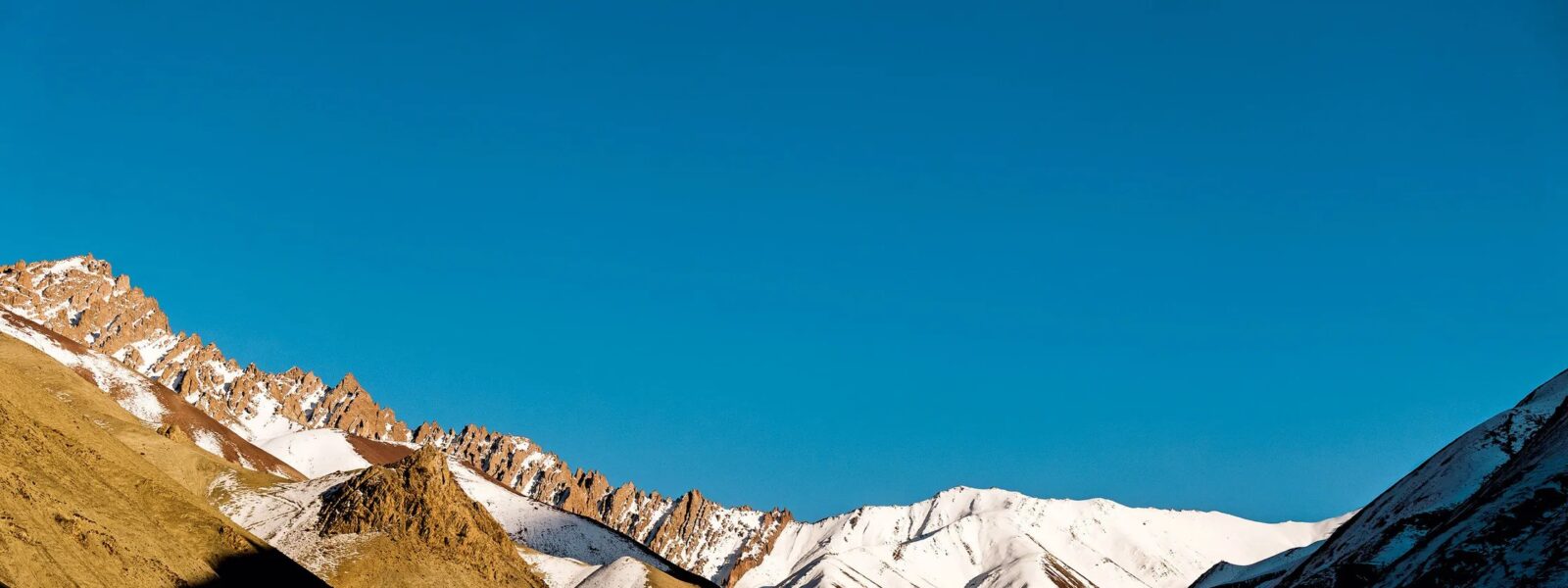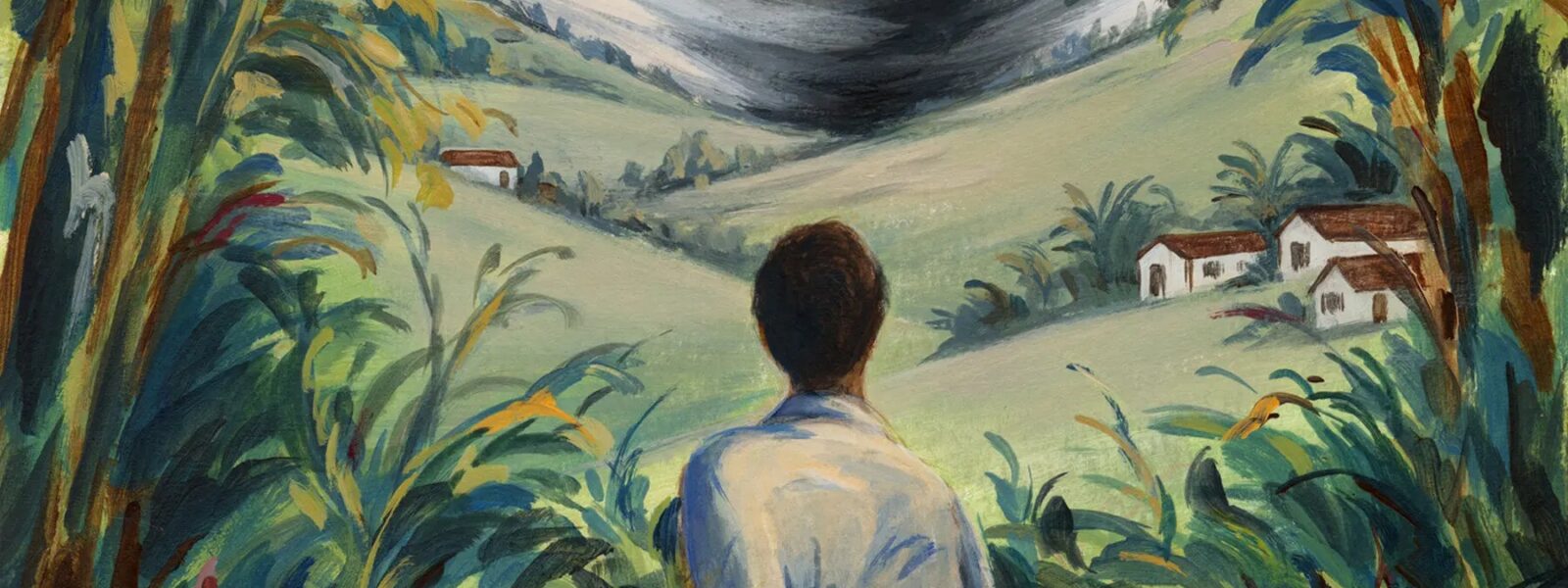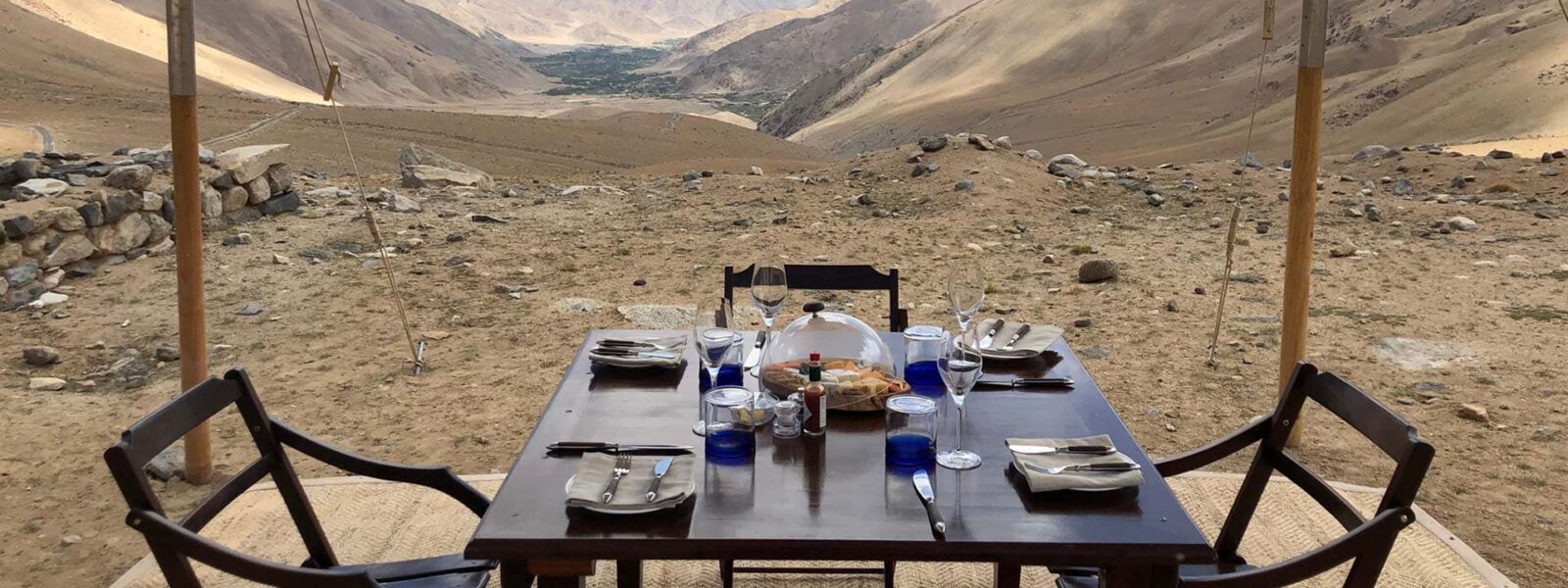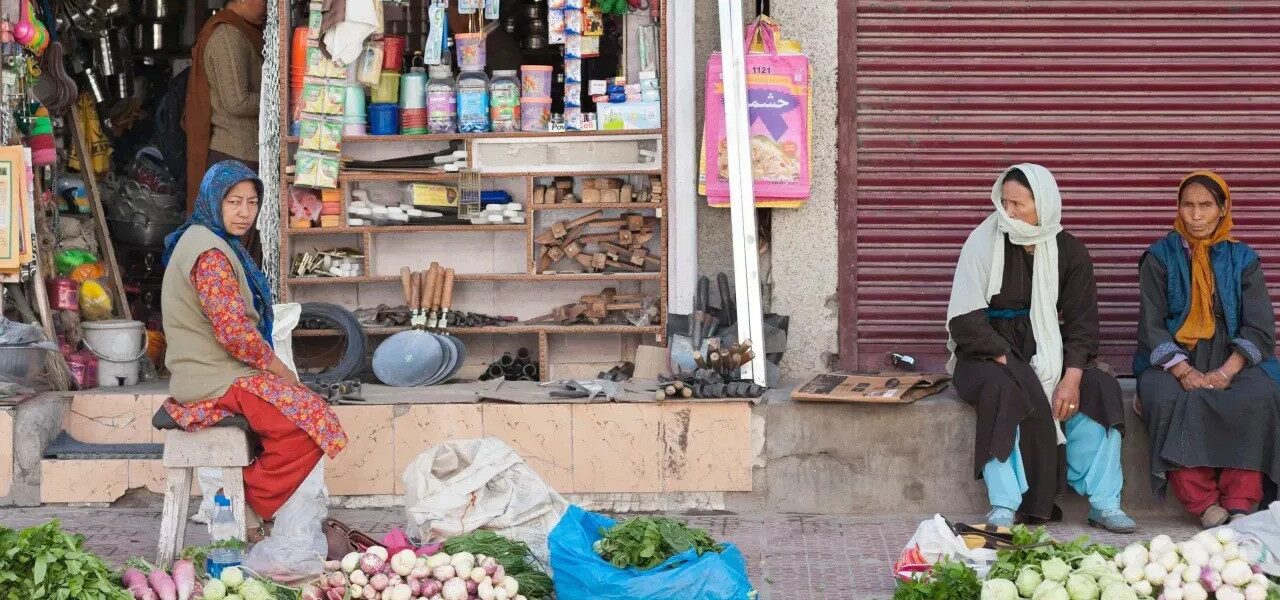Introduction – From Andes to Himalayas: Searching for the Soul of Road Travel
Car Tours as Windows to Landscape and Culture
The concept of a car tour may seem mundane at first glance—four wheels, a road, and a destination. Yet in my years as a regenerative tourism consultant, I’ve come to understand that a road trip is more than transit—it’s a transformative lens. Through it, we watch the land breathe, cultures unfold, and histories reveal themselves with every curve, ascent, and sudden pause.
Whether you’re driving through the sunburnt plains of Andalucía or navigating the fjord-lined highways of Norway, the rhythm of the road has a peculiar way of reshaping how we engage with place. We slow down. We observe. We listen. And in that stillness, we start to feel the difference between merely arriving and truly arriving.
I’ve had the privilege of traveling iconic routes—the Amalfi Coast’s coastal swirls, Iceland’s barren, cinematic stretches, even the transcendental silence of Morocco’s Dades Valley. But there was always a whisper in the back of my mind: what lies beyond the known circuits of Europe and Latin America? Where does the road lead when the map becomes less familiar?
A Personal Drive: Why I Came to Ladakh After Years in Patagonia and the Sacred Valley
Perhaps it was the mountain air I’d grown accustomed to in the Peruvian Andes. Perhaps it was a yearning to witness how ancient cultures survive in altitudes that test not only your lungs but your sense of presence. Whatever the reason, the Himalayas began to call—and Ladakh in particular.
Ladakh’s reputation in the sustainable travel community is still nascent, yet quietly rising. Unlike the busier tourist belts of India, Ladakh offers a quieter proposition: a high-altitude desert where every valley holds both silence and story. A place where Buddhist monasteries cling to ochre cliffs, and turquoise lakes blink like secrets in the sunlight.
What I didn’t expect, however, was the role of the car. I arrived assuming that trekking or local buses would be the primary way to engage with the terrain. But I quickly discovered that road travel in Ladakh is not only essential—it is revelatory. The region’s vastness, its altitude, and its layered remoteness make the vehicle a vessel of connection, not separation.
From that moment, I resolved to understand how Ladakh’s car tours fit into the greater global narrative of road travel. This column is my attempt to share what I found—not as a promotional pitch, but as an honest comparison drawn from landscapes I’ve known, roads I’ve followed, and places I’ve felt, in every sense of the word.
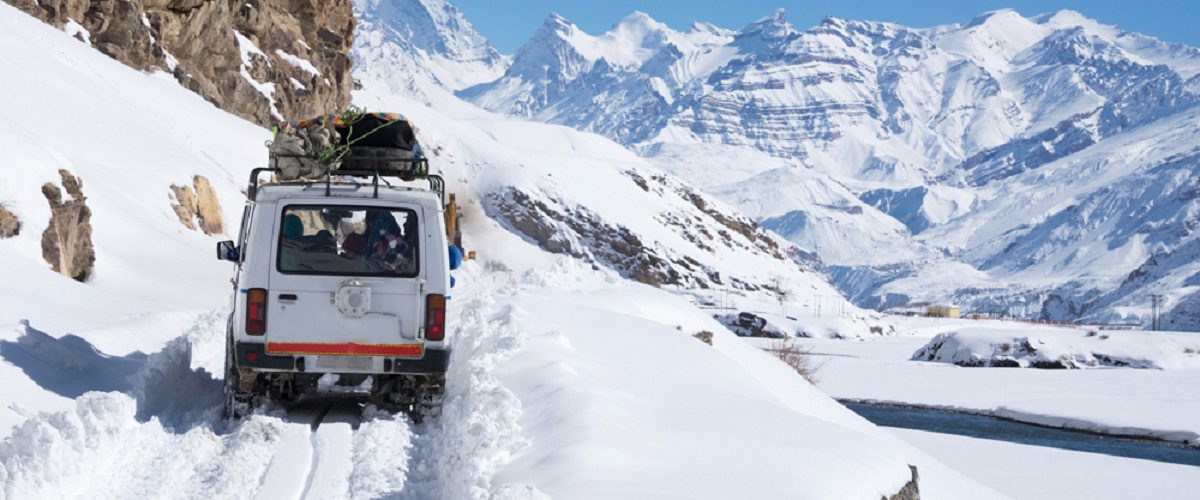
What Makes a Road Trip Unforgettable? Comparing the World’s Most Iconic Routes
Route 66 (USA) – A Journey Through Pop Culture
There’s something eternally seductive about the open road of Route 66. Stretching from Chicago to Santa Monica, this 3,940-kilometer ribbon of asphalt became more than a path—it became a metaphor. The “Mother Road” promised freedom, rebellion, and discovery, themes that echoed across diners, neon signs, and the endless desert sky.
But despite its charm, I found Route 66 to be, at times, overly mediated. The experience felt curated rather than raw. There was a script to follow, rest stops that seemed staged, and encounters that catered to nostalgia more than authenticity. It was iconic, yes—but was it sacred?
Garden Route (South Africa) – Coastal Beauty with Biodiversity
Driving along South Africa’s Garden Route is like flipping through a well-designed coffee table book: lush forests, hidden lagoons, and humpback whales breaching offshore. From Knysna to Tsitsikamma, nature seems to rise up to the edge of the road and whisper “welcome.”
What made this route unforgettable wasn’t just the scenery—it was the way it demanded your attention. The biodiversity here isn’t a backdrop; it’s a protagonist. That said, accessibility was easy, perhaps too easy. With every curve clearly marked and every experience commodified, some of the magic felt diluted.
Iceland’s Ring Road – Fire, Ice, and Solitude
In Iceland, the landscape dominates the dialogue. The Ring Road, looping around the island, offers a masterclass in geological drama: black sand beaches, volcanic plains, glacial tongues, and steaming fumaroles. It’s the kind of drive that makes you feel small—and that is, paradoxically, empowering.
But solitude comes at a price. During winter, blizzards close roads in minutes. In summer, the loop is lined with rental vans chasing the same Google Maps stars. Even remoteness is trending now. I adored Iceland’s rawness, but part of me wondered: is there a place left where the road doesn’t lead to crowds?
The Ladakh Difference – High Altitude, Deep Silence, and Spiritual Terrain
And then came Ladakh. A land where the silence is so thick you can hear your thoughts shifting. Unlike Route 66’s kitsch or Iceland’s explosive beauty, Ladakh’s car routes offer something few others do: transcendence. Here, roads are carved not for comfort but for survival. Passes like Khardung La or Chang La aren’t just milestones—they are initiations.
In this Himalayan region, driving becomes a ritual. Each bend introduces a monastery, a patch of fluttering prayer flags, a solitary shepherd. Unlike other famous routes, you’re not guided by signage or souvenir stops but by stillness. The remoteness isn’t marketed—it’s embedded in the soil.
So what makes a road trip unforgettable? It’s not the number of Instagram likes or the smoothness of the asphalt. It’s the way the journey alters your interior landscape. And in that sense, Ladakh doesn’t just belong among the greats—it redefines the category.
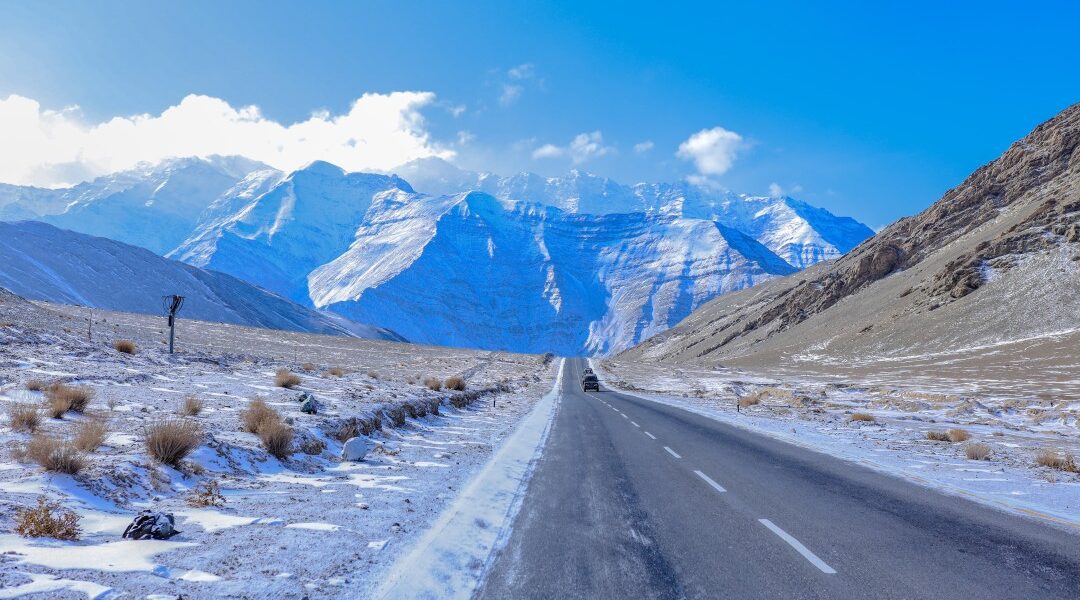
Ladakh’s Car Tours: The Anatomy of a Hidden Gem
Landscape of Extremes – Driving Between Deserts, Glaciers, and Monasteries
Ladakh is not your typical road trip destination. It doesn’t seduce with smooth motorways or sun-soaked beaches. Instead, it offers contrasts so sharp they can feel surreal: a high-altitude desert bordered by glaciers, with monasteries perched like birds of prey on impossible cliffs. One moment, you’re crossing a bone-dry plateau echoing with wind; the next, you’re climbing toward a pass veiled in snow.
In Europe, road trips often mean changing scenery, yes—but rarely changing altitudes so dramatically. In Ladakh, elevation isn’t a side note; it’s the main act. Every hour brings not only a new view, but a new breath, a new bodily adjustment, and a new emotional register.
From Leh to Nubra Valley, the road curls through moonscapes and past prayer wheels spun by the wind. There are no billboards, no petrol stations with glossy cafés. The silence is part of the terrain, and your vehicle becomes not just a means of transport, but a shelter, a cocoon of movement through the sacred.
Infrastructure Meets Wildness – The Manali-Leh Highway and Beyond
The Manali-Leh Highway is more than just a spectacular drive—it’s an engineering miracle winding through some of the world’s highest passes. At its peak, you touch altitudes above 5,300 meters, where oxygen thins, thoughts slow, and the road feels more like a thread between two worlds than a human-made object.
And yet, it works. Military-maintained and seasonally cleared, the highway provides access to a region otherwise locked in by the Himalayas. Still, make no mistake: this is not a highway in the European sense. Potholes exist. Rockfalls are common. Streams may suddenly cross your path. But therein lies the beauty—you are not shielded from the wild; you are invited into it.
Even beyond this iconic route, secondary roads like those to Pangong Lake, Tso Moriri, or Hanle offer a sense of frontier travel. No commercial traffic, no flashing signs. Just you, your vehicle, and a landscape so ancient it feels mythological.
Self-Drive vs Guided Car Tours in Ladakh: What Works Best?
Many European travelers ask: is Ladakh suitable for a self-drive adventure? The short answer is yes—with caveats. Foreigners can rent cars in Leh (with drivers), but self-driving is best left to those with high-altitude driving experience and a strong sense of navigation and respect for remote environments.
For most, hiring a local driver is not a compromise—it’s a doorway. These guides aren’t just drivers; they’re storytellers, road guardians, and cultural bridges. Their presence adds a human layer to the already monumental geography.
Whether you choose a self-drive SUV or a guided car tour, Ladakh will demand something from you: patience, presence, humility. And in return, it offers something that few roads in the world still possess—a sense of sacred passage.
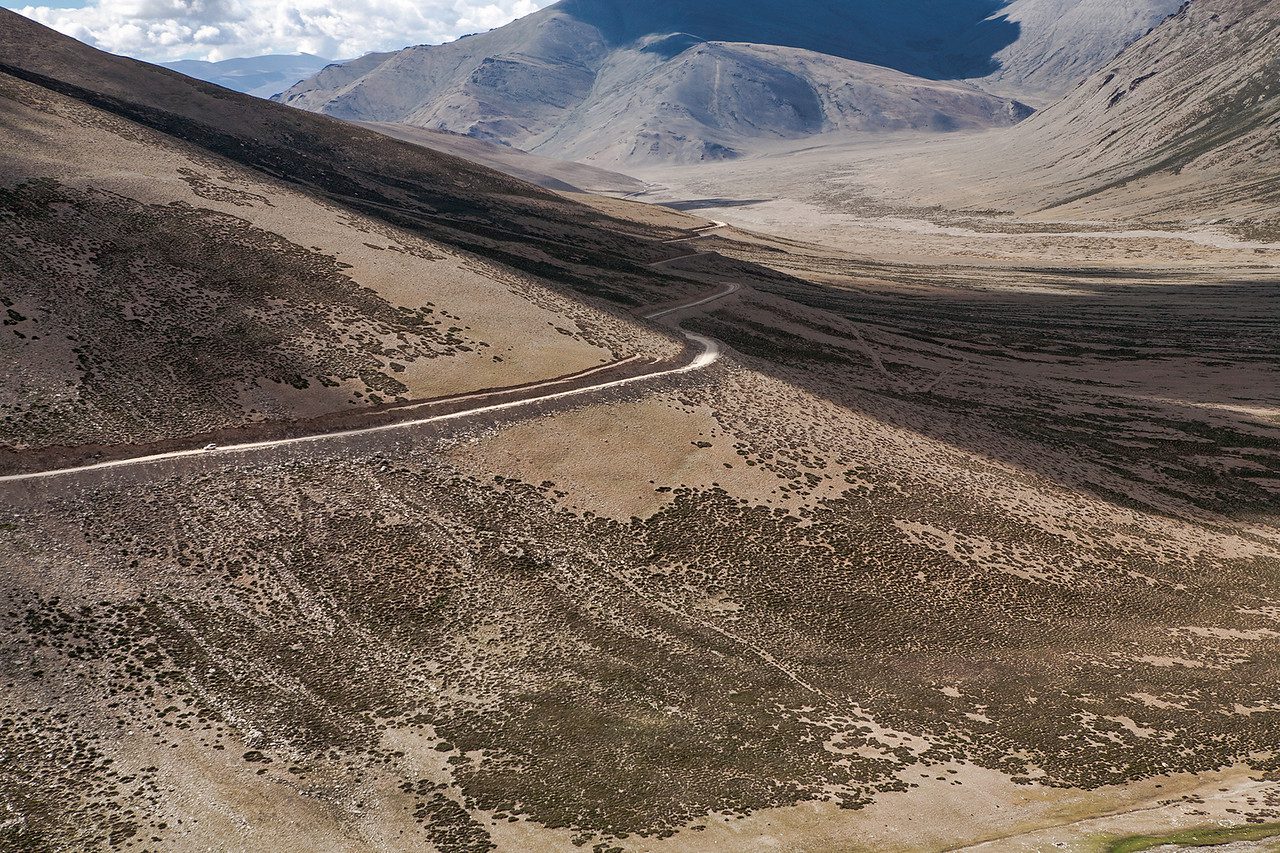
Itineraries That Touch the Soul: Where the Road Actually Takes You
Nubra Valley – Sand Dunes and Silence at 10,000 ft
Few road trips begin with a descent into a desert nestled between glaciers. But that’s exactly what happens when you drive from Leh to Nubra Valley. After crossing Khardung La—one of the world’s highest motorable passes—you begin your descent into an otherworldly terrain where sand dunes ripple between snowy peaks and camels wander across the cold desert.
Nubra isn’t loud about its magic. Villages like Diskit and Hunder greet you with quiet monasteries and clusters of apricot trees. The people are gentle, their pace slower, their hospitality warm but unobtrusive. It’s a place that asks you to pause—not just the car, but the mind.
You begin to realize this isn’t a detour from the Ladakh experience—it is the Ladakh experience. And that’s the secret of the best road trip itineraries: they don’t rush you from highlight to highlight. They create space for stillness.
Pangong Lake – A Blue So Bright It Feels Fictional
Every traveler who drives to Pangong Lake remembers the moment they first glimpse it. After hours of navigating gravel paths and alpine ridges, the lake appears—almost electric in its blueness. At over 4,200 meters in elevation, its waters mirror the sky so perfectly they seem to erase the line between earth and heaven.
Unlike other famous lakes around the world, Pangong has no cafés, no boardwalks, no boats. Just wind, silence, and a landscape that doesn’t ask to be photographed—it demands reverence. For many, it becomes a moment of personal recalibration. The noise of daily life, even the idea of time, dissolves in the stillness.
It’s here that you begin to grasp the profound truth of road travel in Ladakh: the destination is not the point—the transformation is.
Tso Moriri – For Those Willing to Go Off the Grid
If Pangong Lake is a celestial mirror, then Tso Moriri is its introverted sibling—less photographed, more remote, but equally breathtaking. Located deeper in the Changthang Plateau, the road to Tso Moriri is often rough, and mobile signal is a distant memory. But for those who make the journey, the reward is unmatched solitude.
The lake stretches across a barren valley where nomadic Changpa herders graze their pashmina goats. Their tents dot the plains like punctuation in an unwritten poem. Time slows. Your breathing deepens. And you begin to see not just the beauty of the land, but the resilience of those who call it home.
Tso Moriri teaches you that the best road trip destinations aren’t the easiest—they’re the ones that challenge your assumptions of comfort and reward you with a different kind of luxury: authentic connection.
Cultural Touchpoints – Villages, Monasteries, and the Unexpected Warmth of Locals
Beyond the major stops, Ladakh’s car itineraries offer countless smaller encounters: a nun lighting butter lamps at a roadside temple, a child waving from a stone rooftop, an old man mending prayer flags in the wind. These are not attractions—they are exchanges.
Monasteries like Thiksey and Hemis may appear in guidebooks, but their true essence is felt in the silence of their corridors, the chants echoing through incense-thick air, the saffron robes flashing against whitewashed stupas. These places are not museums—they are living spiritual centers.
As you drive between valleys and villages, it becomes clear: this journey is not a checklist of sites, but a continuous immersion. And that is perhaps what distinguishes Ladakh most as a road trip destination—it doesn’t ask you to see more; it asks you to feel deeper.
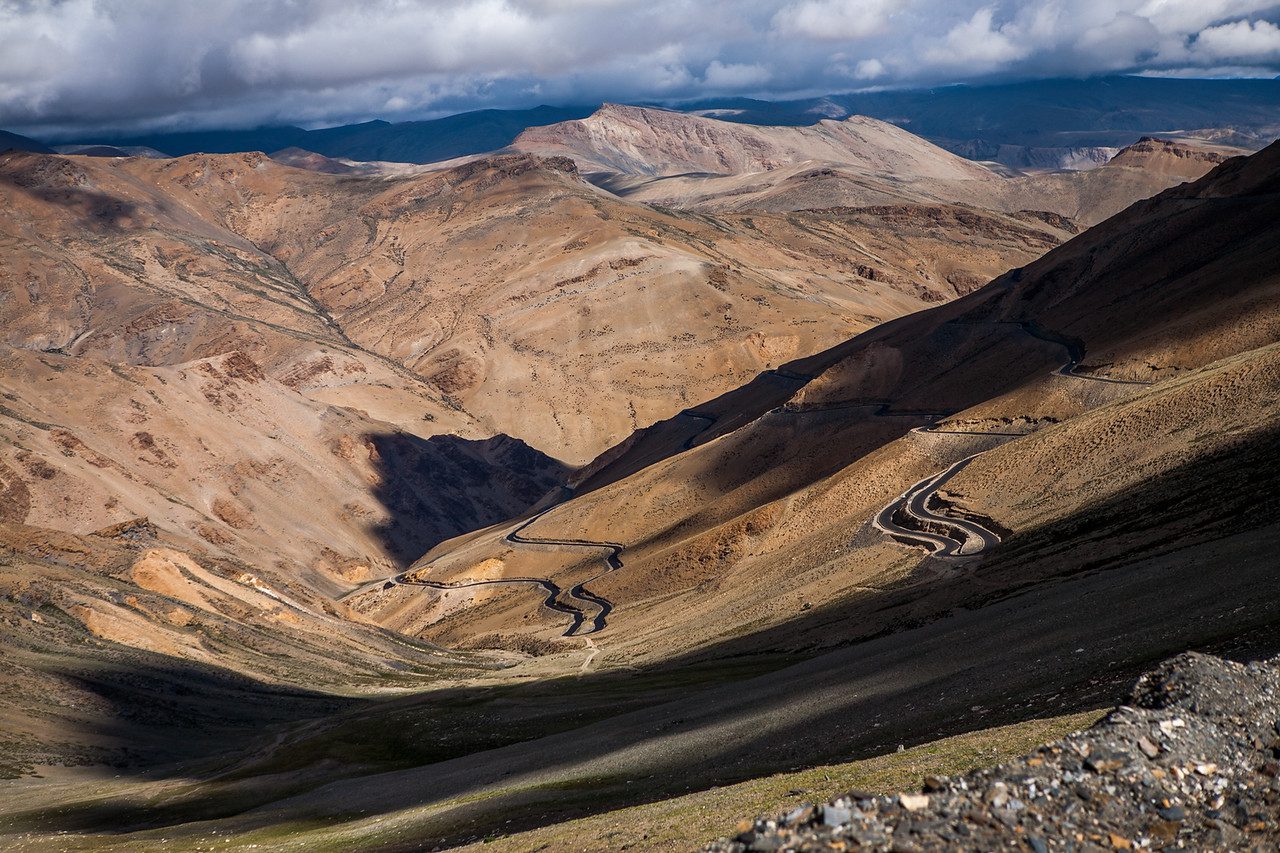
Challenges on the Road – And Why They’re Worth It
Driving in Thin Air: Acclimatization and Safety
Driving in Ladakh is not a casual affair—it’s a high-altitude commitment. The region sits above 3,500 meters, with several passes soaring beyond 5,000. For European travelers accustomed to alpine roads in the Dolomites or the French Alps, the elevation here is in a different league.
The most important preparation isn’t packing the right clothes—it’s respecting your body’s limits. Acclimatization days in Leh are not optional. Altitude sickness doesn’t care how fit or well-traveled you are. Symptoms like dizziness, headaches, and nausea can appear quickly—and driving under such conditions is not only unpleasant but dangerous.
Yet those who allow their bodies to adjust will find that their senses sharpen with the altitude. The air is thinner, yes, but the silence is thicker. Driving becomes more intentional, more present. Every curve demands attention, every descent offers relief. In a world of auto-pilot highways, Ladakh offers the gift of full awareness.
Permit Realities: What You Need Before You Hit the Road
Ladakh isn’t just geographically remote—it’s geopolitically sensitive. Many regions, especially those near the Chinese and Pakistani borders (such as Nubra, Pangong, Tso Moriri, Hanle), require Inner Line Permits (ILPs). These are mandatory for both Indian nationals and foreigners, and must be obtained in advance or through a registered travel agency.
While this may sound bureaucratic, it’s not complicated. In Leh, several agencies handle the paperwork within hours. What matters is knowing where you plan to go. Spontaneity is possible—but only if you’re prepared. Routes can change due to military restrictions, weather, or local festivals. Staying informed and flexible is part of the journey.
Interestingly, these restrictions add a layer of intention to your route. Every permitted road becomes a privilege, not a given. And in a world of over-tourism, that shift in mindset feels not restrictive—but liberating.
Car Rental in Leh and the Ethics of Travel in Remote Zones
Renting a vehicle in Leh is straightforward, though with certain boundaries. Self-drive cars rented outside Ladakh (such as from Manali or Srinagar) are not allowed on inner routes unless Ladakhi drivers are employed. This is both a legal requirement and a local economic protection.
For visitors, it’s an opportunity rather than an obstacle. Hiring a local driver supports the community, but also provides cultural access, historical context, and crucial navigation help on tricky mountain routes. These aren’t just drivers—they are custodians of the road.
In the regenerative tourism world, we often speak of “slow travel” and “low-impact access.” Ladakh’s car tour ecosystem, surprisingly, already embodies this. By requiring interaction, patience, and local connection, the landscape protects itself—and educates the traveler in return.
So yes, Ladakh presents logistical and physical challenges. But it also rewards you with a kind of clarity that smooth roads can never deliver. Here, difficulty is not a deterrent—it’s an invitation.
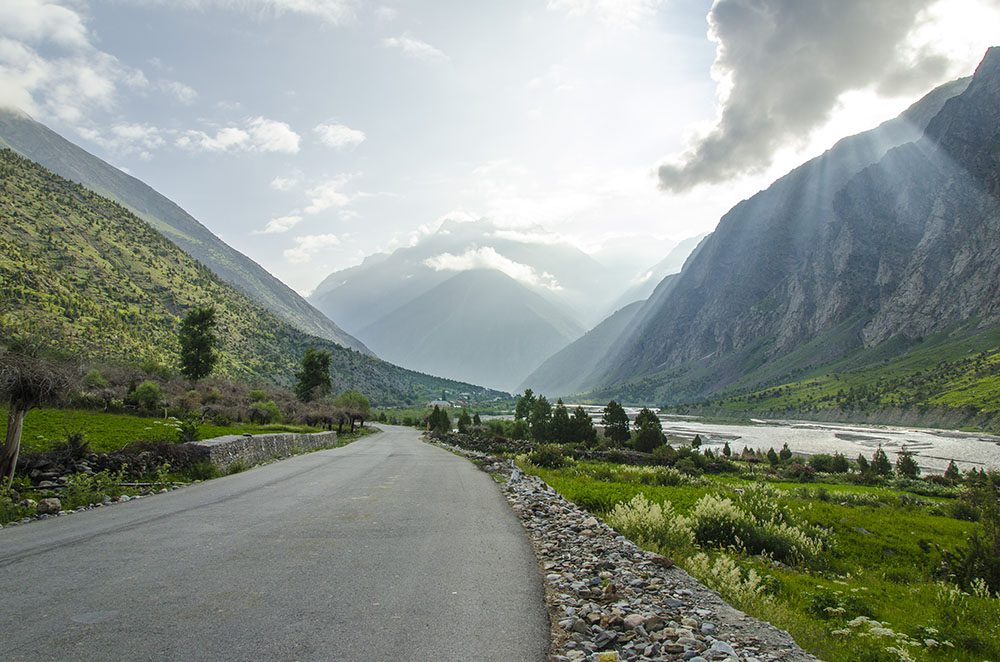
Regeneration on the Road: How Car Tours in Ladakh Can Support Sustainable Tourism
The Hidden Cost of Fuel and Footprint – Driving Mindfully
The Himalayas may look untouched, but they are not immune. Every vehicle that climbs its winding passes leaves behind more than just tire tracks. Fuel burns differently at high altitude. Emissions linger longer. Plastic bottles and snack wrappers, once rare, now dot the trails and roadside clearings.
As someone who has long advocated for regeneration rather than just sustainability, I believe that car travel in Ladakh is not inherently destructive—but it must be conscious. Choose a shared ride. Avoid unnecessary idling. Offset your carbon. And perhaps most powerfully: slow down.
Unlike the autobahns of Europe or the efficient motorways of the Netherlands, Ladakhi roads are not built for speed. And that is their greatest strength. They force us into a slower rhythm, one that allows appreciation, reflection, and respect.
Supporting Local Communities – Stop, Stay, Spend
The regenerative traveler understands that spending money is not just economic—it’s relational. When you stop in a small village to drink butter tea, when you choose a homestay over a hotel, you inject dignity into the travel economy.
In Ladakh, this matters immensely. Tourism is a lifeline for many remote communities, especially after long winters and limited agricultural yields. Yet the benefits of tourism often bypass the locals—unless you make deliberate choices. Buy local crafts. Eat local food. Learn a few words in Ladakhi. These gestures, while small, ripple far.
Even your driver can become an agent of regeneration. Ask for his story. Invite him to eat with you. In many cases, you’ll find a philosopher behind the wheel, not just a chauffeur. And in turn, you’re no longer just a tourist—you’re a participant.
A Road Ethic: Slowing Down to Witness and Respect
True regeneration is not about perfection—it’s about attention. How we move through a place shapes the place. The Ladakhi landscape, delicate and immense, requires not just eco-friendly vehicles but an eco-conscious mindset.
Drive as if you’re entering a temple. Observe as if every hill is a living monument. And remember that the road is not a blank slate—it’s a thread through someone else’s home, history, and hopes.
Ladakh gives you the chance to travel beautifully—both in what you see and how you impact what you see. To regenerate is not just to preserve—but to heal. And every traveler who takes that responsibility seriously becomes part of Ladakh’s future, not just its present.
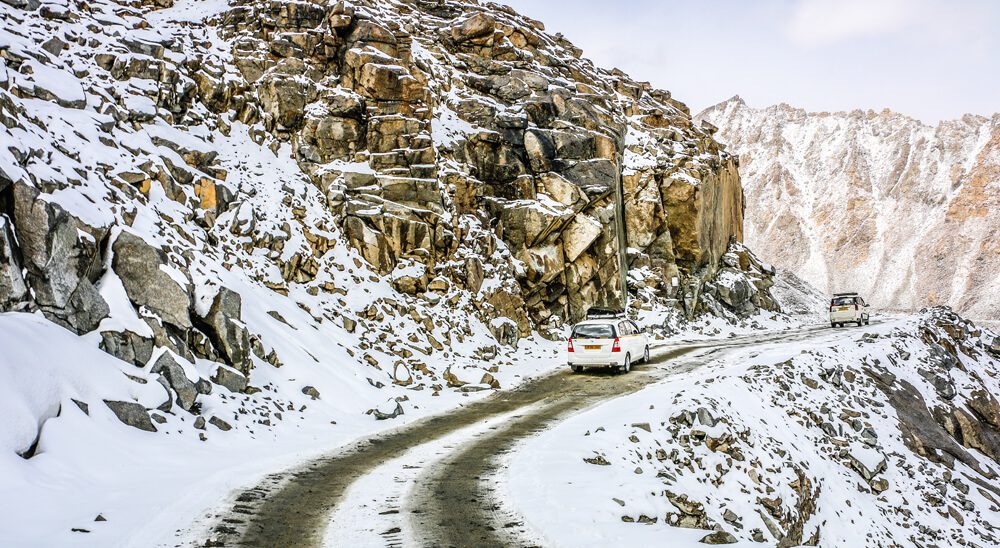
Conclusion – The Map is Not the Territory: Rediscovering Road Travel in Ladakh
Why “Hidden” Isn’t Just a Word — It’s an Invitation
There’s a reason we speak of Ladakh as a “hidden gem.” It’s not because it’s hard to find on the map—GPS will get you there. It’s not because no one has heard of it—Pangong Lake appears in a dozen Instagram feeds a day. No, Ladakh is hidden in the way a poem is hidden: its meaning is revealed only to those who are willing to go beyond the surface.
Car tours in Ladakh aren’t about ticking off destinations. They’re about encountering the unknown—sometimes in the landscape, but often in yourself. The map may show you roads and passes, but it won’t show you the conversations with a monk, the wind between gompas, or the silence that shifts your worldview.
From the Passenger Seat to the Heart of a Place
In most road trips, we are observers. Through the window, the world slides by like a film. But in Ladakh, the landscape doesn’t just pass—it speaks. The ridges whisper of ancient kingdoms, the rivers carry mantras, and the people invite you into moments that refuse to be rushed.
Whether you sit behind the wheel or beside a local driver, you are part of a journey that is both physical and philosophical. You begin to realize that Ladakh is not just another destination on your adventure road trip checklist. It’s a mirror held up to your pace, your values, your presence.
As the tires roll over stone and sand, what remains isn’t just dust—it’s memory. And when you return home, it won’t be just your camera roll that’s full, but your heart. Ladakh may be remote, but once you’ve traveled its roads, it becomes strangely central. A compass point. A reference. A reminder that some roads don’t just take you places—they take you deeper into the world, and into yourself.

About the Author
Isla Van Doren is a regenerative tourism consultant from Utrecht, Netherlands, currently based in the highlands of Cusco, Peru. At 35, she brings over a decade of international experience in sustainable travel across Latin America, Southern Africa, and parts of Eastern Europe.
Her writing style blends academic precision with emotional depth, often weaving together data, memory, and place. She is known for drawing sharp comparisons between destinations, guided by a deep curiosity and critical eye for both ecological integrity and cultural nuance.
This was her first visit to Ladakh, and it left a lasting impression. Her observations are shaped by her experience in Patagonia and the Sacred Valley, yet in Ladakh, she found a rhythm unlike anywhere else. Through reflective and analytical storytelling, she hopes to help readers see travel not as consumption, but as connection and responsibility.


